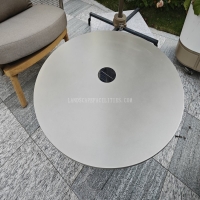Welcome to the website for landscape facilities products and knowledge.
How does the bin’s design ensure that it remains effective in areas with high levels of precipitation?
In regions with heavy rainfall or frequent storms, standard waste bins often fail to perform efficiently. However, modern bin designs incorporate several key features to withstand high precipitation levels while maintaining functionality.
1. Waterproof Materials: High-quality bins are constructed from weather-resistant materials like polyethylene or galvanized steel, preventing rust and degradation even in constant wet conditions.
2. Smart Drainage Systems: Many bins include strategically placed drainage holes at the bottom to allow water to escape, preventing overflow and reducing odor buildup from stagnant water.
3. Secure Lids: Tight-fitting or weighted lids prevent rainwater from entering the bin while keeping waste contained during strong winds. Some advanced models feature self-closing mechanisms.
4. Elevated Bases: Bins designed for wet climates often sit on raised platforms or feet, keeping them above ground-level puddles and improving airflow to speed drying.
5. Sloped Surfaces: Angled tops and smooth contours help shed water quickly rather than allowing it to pool, which could lead to leaks or structural damage over time.
These design elements work together to ensure bins remain functional and hygienic regardless of rainfall intensity, making them ideal for coastal cities, tropical regions, and other high-precipitation environments. Municipalities and property managers should prioritize these features when selecting outdoor waste solutions.
Related search:

Recommendation
Outdoor stainless steel table with solar-powered ambient lighting feature - excellent design.